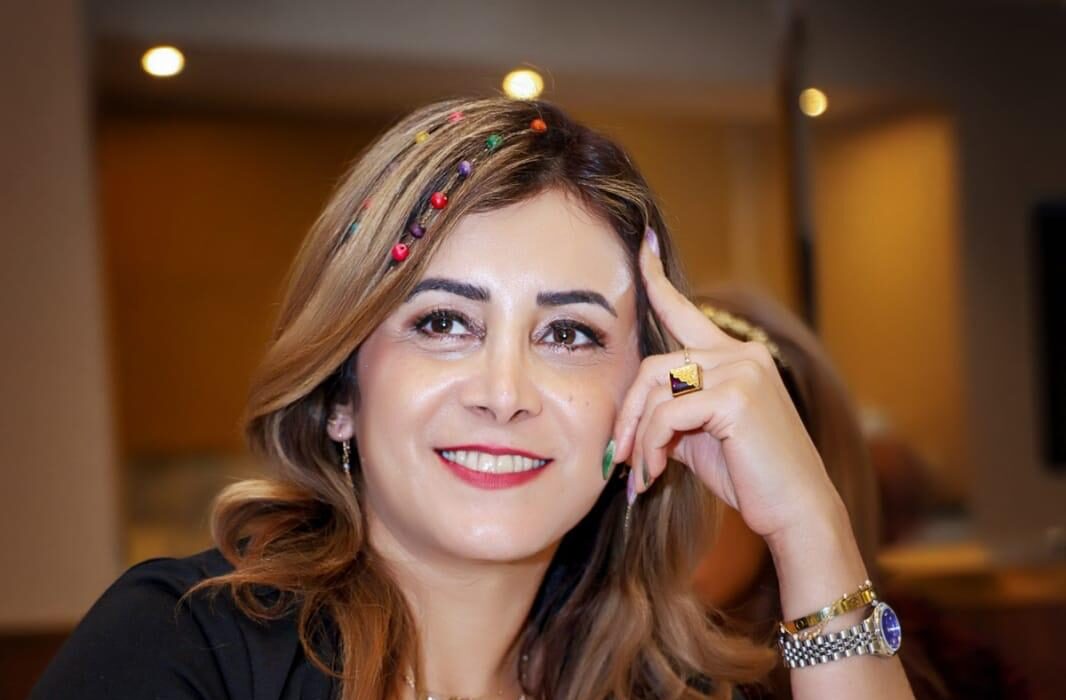In the corridors of the UK Parliament, the lecture halls of prestigious universities, and the boardrooms of international organizations, one voice has consistently risen above the noise of climate discourse not with empty promises or theoretical abstractions, but with the fierce clarity of someone who understands that environmental policy without social justice is simply privileged environmentalism in disguise.
Professor Shabnam stands at the epicenter of a revolution in how we approach climate change, wielding her PhD in Environmental Management like a sword of truth, cutting through decades of exclusionary environmental policy to reveal what she calls “the moral dimension of the climate crisis.” As a UN Senior Associate, Peace Ambassador, and one of 2025’s Global Top 32 Influencer Women, she embodies a new generation of leaders who refuse to separate scientific rigor from social conscience.
Her journey represents more than individual achievement it’s a blueprint for transformative leadership in an era when the planet’s survival depends on leaders who can think systemically, act courageously, and lead inclusively.
The Scholar-Activist: Redefining Environmental Leadership
Professor Shabnam’s recognition as one of the Global Top 32 Influencer Women in 2025 represents something profound in the evolution of environmental leadership. “On a personal level, it affirms the values I hold close: resilience, purpose, and integrity,” she reflects. “But more than an individual achievement, I see this recognition as a collective milestone. It belongs to everyone who has walked alongside me, supported the mission, and believed in creating a more equitable and empowered future.”
This perspective viewing personal success as collective responsibility permeates every aspect of her work. As an academic whose research has been cited over 2,330 times globally across more than 10 influential publications, she has consistently pushed the boundaries of how we understand climate change, moving beyond carbon metrics to examine the human rights implications of environmental degradation.
“Through my writing on climate justice and climate change management, my aim is to shift the conversation from one focused solely on carbon and technology, to one that also centers equity, ethics, and the lived realities of vulnerable communities,” she explains. Her work exposes what she calls “the injustices hidden within the climate crisis where those who contribute the least often suffer the most.”
Navigating the Intersection: Where Diplomacy Meets Data

The complexity of Professor Shabnam’s role portfolio UN Senior Associate, Peace Ambassador, Academic might seem overwhelming to most, but she navigates these intersections with the precision of someone who understands that today’s challenges require interdisciplinary solutions.
“Navigating the intersection of activism, diplomacy, and scientific research requires a balance of heart, strategy, and evidence,” she explains. “Each role brings a different strength but when aligned, they become a powerful force for sustainable and meaningful change.”
Her approach demonstrates how academic rigor can inform diplomatic strategy without compromising activist principles. “As an academic, I ground my work in evidence-based research and critical thinking. As a Peace Ambassador, I carry the responsibility to listen, bridge divides, and foster dialogue. As an activist, I give voice to those often unheard and challenge systems of inequality.”
This integration becomes particularly powerful in her work on climate policy. Rather than treating environmental issues as purely technical challenges, she consistently frames them within broader contexts of social justice, human rights, and conflict prevention.
The Urgent Agenda: Systemic Solutions for Interconnected Crises
When pressed about the most urgent issues facing the world today, Professor Shabnam’s response reveals the depth of her systems thinking. Drawing on her expertise in climate change modeling and eco-design thinking, she identifies three interconnected priorities that demand immediate attention.
“Climate Justice and Equitable Adaptation” tops her list not merely as a moral imperative, but as a practical necessity. “We must urgently address the disproportionate impacts of climate change on the world’s most vulnerable populations particularly in the Global South. Climate adaptation strategies must be inclusive, locally driven, and rooted in justice.”
Her second priority, “Decarbonisation with Design Intelligence,” reflects her innovative approach to environmental solutions. “We need to transition from extractive, carbon-heavy systems to regenerative, circular models. This requires eco-design thinking not just retrofitting existing infrastructure, but reimagining how we build, consume, and live.”
The third priority “Science-Policy Integration and Public Trust” addresses one of the most critical gaps in current climate action. “One of the greatest risks we face is not the lack of knowledge, but the failure to act on what we already know. Bridging the gap between scientific evidence and policy action is critical.”
Innovation in Action: From Waste to Energy, Problems to Solutions
Professor Shabnam’s work in Waste to Energy (WtE) exemplifies her approach to turning environmental challenges into opportunities. Using integrated methods grounded in Environmental Management, Eco-Design Thinking, and Climate Modelling, she has developed WtE systems that prioritize minimal environmental impact, high energy efficiency, and strong community benefit.

“This work aligns directly with several Sustainable Development Goals,” she notes, detailing connections to affordable clean energy, sustainable cities, responsible consumption, climate action, and infrastructure innovation. “Importantly, I advocate for WtE solutions that do not compete with recycling or reduce incentives for waste reduction. Instead, they must be part of a broader, integrated waste management strategy aligned with community needs, equity, and ecological balance.”
This philosophy that environmental solutions must be holistic rather than piecemeal runs through all her technical work. Whether designing energy systems or developing policy frameworks, she consistently asks not just whether something works technically, but whether it serves justice.
The Parliamentary Moment: When Science Meets Power
Among her many speaking engagements on global platforms, one moment stands out as particularly transformative: her speech in the UK Parliament on the intersection of Women’s Leadership, Empowerment, and Climate Change.
“I highlighted the fact that while women especially in the Global South are disproportionately affected by the climate crisis, they are also among the most powerful agents of change,” she recalls. “What made this speech especially meaningful was that it was not just a call for inclusion it was a Demand for Recognition and Investment in Women’s Leadership as central to climate solutions.”
The response was immediate and profound. “Policymakers, civil society leaders, and young women in the audience voiced their deep connection to the message. Some said it was the first time they had heard climate policy discussed through a gendered lens in such a direct and urgent way.”
This moment crystallized her understanding of how platforms can be used not just to inform, but to transform discourse itself.
Reshaping Environmental Leadership Through Gender Lens
Professor Shabnam sees the evolution of female leadership in environmental policy as both inevitable and essential. “Female academics, in particular, are increasingly at the forefront of interdisciplinary research that connects climate change with social justice, health, economics, and gender equity. Their work is helping to redefine what expertise looks like grounding data in lived experience, and pushing for policies that are both scientifically sound and socially just.”
She emphasizes the unique qualities that women often bring to environmental leadership: “What’s especially powerful is how female leadership often emphasises collaboration over competition, care over control, and inclusion over exclusion values that are urgently needed in today’s climate crisis.”
However, she’s clear that evolution doesn’t mean the work is complete. “Women particularly women of colour and those from the Global South still face systemic barriers to funding, visibility, and decision-making roles. That’s why part of our responsibility as female leaders is not just to lead, but to open the space wider.”
Mentorship as Movement Building
Central to Professor Shabnam’s impact is her commitment to mentoring the next generation of changemakers. “I believe mentorship is not about creating followers; it’s about Nurturing Leaders,” she explains. “I make space for women to question, innovate, and lead with confidence whether that’s in publishing ground-breaking climate research, influencing environmental policy, or launching community-driven sustainability projects.”
Her advice to emerging leaders is both practical and inspirational: “Own your voice don’t wait for permission to speak or lead. Stay rooted in your values integrity and compassion are as vital as expertise. Be courageous especially when advocating for justice in spaces where resistance exists.”
She particularly emphasizes collective action: “Support each other because progress is stronger when we rise together. And never underestimate your impact real change often begins quietly, with one bold question, one piece of research, one act of leadership.”
Transforming Organizations Through Eco-Design Thinking
As a consultant and trainer in Eco-Design Thinking, Professor Shabnam has played a pivotal role in helping both businesses and governments rethink their approaches to climate resilience and innovation. Her methodology emphasizes holistic, systems-based approaches that prioritize environmental sustainability, social equity, and economic viability from the earliest stages of planning and development.
“In the Business Sector, this has meant guiding companies to redesign products, supply chains, and operations to reduce carbon footprints, minimize waste, and create long-term value that aligns with environmental goals,” she explains. “In the Governmental Arena, my training has helped policymakers and public sector leaders incorporate climate resilience into infrastructure planning, urban development, and public services.”
Her approach bridges the gap between abstract sustainability goals and concrete, actionable strategies demonstrating that environmental responsibility and business success are not just compatible, but mutually reinforcing.
Turning Barriers into Bridges
Like many women in leadership positions, Professor Shabnam has faced significant challenges in her career. “One consistent challenge has been having to prove credibility and authority repeatedly, often more so than my male counterparts,” she acknowledges. “This can be exhausting, but I’ve learned to transform it into an opportunity to Demonstrate Excellence and Build Alliances.”
Rather than compromising her values to fit existing systems, she has chosen authenticity and inclusive leadership. “Instead of conforming to established norms or leadership styles that don’t align with my values, I’ve embraced Authenticity and Inclusive Leadership showing that empathy, collaboration, and intersectionality are strengths, not weaknesses, in addressing complex environmental issues.”
These challenges have become catalysts for growth and platforms for advocacy. “Every obstacle has been a catalyst for growth and a reminder that leadership is not just about reaching the top it’s about lifting others as you rise.”
The Art of Dynamic Balance
Managing multiple high-level roles professor, speaker, politician, board trustee, and peace ambassador requires what Professor Shabnam calls “purpose alignment” rather than mere time management.
“At the core of everything I do whether I’m lecturing students, shaping environmental policy, serving as a peace ambassador, or speaking on global platforms is a unified mission: to advance Justice, Sustainability, and Inclusive Leadership in everything I touch,” she explains. “Each role is an extension of that mission, not a separate path.”
Her approach emphasizes integration over fragmentation: “My academic work informs my public policy advocacy. My role as a politician is grounded in evidence and ethics. My peacebuilding efforts are shaped by both local insight and global context. The cross-pollination of these spheres makes each role richer and more effective.”
Collaborative Solutions for Complex Challenges
Professor Shabnam views collaboration between academia, policymakers, and the private sector as absolutely essential for solving environmental crises. “Each sector brings a unique strength: Academia offers evidence-based insights, critical analysis, and innovation. Policy-makers have the authority to implement change at scale. The private sector brings agility, resources, and the ability to scale sustainable solutions through markets.”
She points to a Climate Resilience Project as an example of breakthrough results from tri-sector collaboration. “I led the research and strategy side, using climate change modelling and eco-design thinking to assess risks and opportunities for sustainable infrastructure in a rapidly urbanising region. By integrating academic data with community priorities and private sector technology, we co-developed a decentralised solar energy system and circular waste-to-energy solution that not only reduced emissions but also created local jobs and improved public health outcomes.”
The success, she emphasizes, wasn’t just technical but systemic: “Policymakers gained actionable insights, businesses aligned profit with sustainability, and local communities felt ownership in shaping the outcomes.”
Vision 2030: Reimagining Global Governance
Looking toward 2030, Professor Shabnam’s hopes center on the convergence of environmental governance and peacebuilding. “My greatest hope and my strongest prediction is that Environmental Governance and Peacebuilding will no longer be seen as separate agendas, but as deeply interconnected imperatives.”
She envisions environmental agreements that are “enforceable, equitable, and people-centered,” peacebuilding strategies that “embed climate resilience,” and a global shift “from reactive policy to preventive Diplomacy, where environmental degradation is treated as a security risk.”
Central to this vision is “the rise of a new generation of leaders ethical, data-informed, and justice-driven who can navigate the complexity of ecological and human systems with compassion and courage.”
Recognition with Responsibility
Among her numerous prestigious awards, the “World Women’s Peace Ambassador” and “Global Women in Climate Leadership Champion Award” hold special meaning for Professor Shabnam. “What made this recognition particularly profound wasn’t just the prestige it was what it represented: the acknowledgment of work that connects Science, Justice, and Humanity in a field that often separates them.”
The award came at a crucial time when she was advocating for climate solutions that centered women, youth, and vulnerable communities perspectives not always welcome at decision-making tables. “To be recognised not just as a scientist or policy advisor, but as a Change-maker Bridging Worlds academia and activism, policy and empathy was incredibly affirming.”
Most importantly, it reinforced her commitment to mentorship: “If my recognition can inspire just one young woman from underrepresented backgrounds to believe that their voice matters in climate leadership, then the award has fulfilled its highest purpose.”
Legacy of Transformation
When asked about the legacy she hopes to leave, Professor Shabnam’s response reflects the integration that defines her work: “The legacy I hope to leave is one of Transformation through Integrity, Inclusion, and Impact.”
As an academic, she wants her work to “go beyond publication to shape policy, empower communities, and spark courageous thinking.” As a Peace Ambassador, she hopes to have demonstrated that “peace is not passive it is proactive. It is built in classrooms, parliaments, boardrooms, and refugee camps alike.” As a Global Influencer, she has used her platform to “Uplift, not Overshadow; to inform, inspire, and ignite collective courage.”
“Ultimately, I want my legacy to be this: that I stood at the intersection of science, policy, and humanity and helped Build Bridges where there were Barriers, and hope where there was harm. And that I never lost sight of the people behind the problems, or the planet we are all called to protect.”
The Courage to Reimagine
Professor Shabnam’s journey from academic researcher to global influencer represents more than personal success it’s a model for the kind of integrated, justice-centered leadership our world desperately needs. In an era when environmental challenges are inseparable from social justice issues, when climate science must inform diplomatic strategy, and when local solutions require global cooperation, she demonstrates how complexity can be navigated without compromising core values.
Her message to current and future leaders is both challenge and invitation: “Let us lead not just with titles, but with truth. Let us influence not just for recognition, but for responsibility. And let us act not just for today, but for the generations yet to come.”
In Professor Shabnam’s work, we see the emergence of a new paradigm for environmental leadership one that refuses to separate scientific rigor from social conscience, that views challenges as opportunities for transformation, and that understands that the future of our planet depends not just on what we know, but on how courageously we act on that knowledge. As she continues to build bridges between worlds that have too often remained separate, Professor Shabnam reminds us that true leadership in the 21st century requires not just expertise in one field, but the wisdom to see connections across disciplines—and the courage to act on those connections for the benefit of all.




